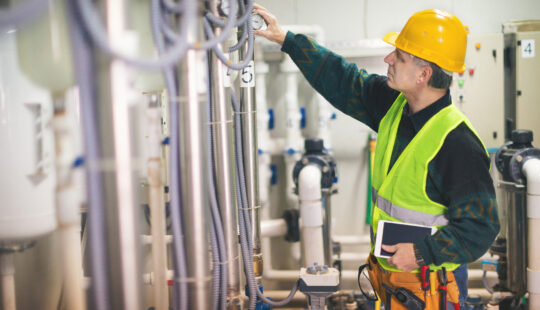“With a growing number of customers and increasingly complex supply chain processes, VDL needed to replace its legacy system with a modern and flexible IT landscape to support our clear Industry 4.0 vision to drive efficiencies and be ready for the future.”
These were the words of Pepijn Timmermans, vice president of Digitalization at VDL Nedcar, who I recently had the chance to speak to about how the company modernized and digitalized its yard operations.
What Is VDL Nedcar?
VDL Nedcar is not just the only independent contract manufacturer in the Netherlands but also one of the most advanced vehicle manufacturers in Europe. The 50-year-old company builds high-quality cars for major brands such as BMW, as well as a plug-in hybrid electric vehicle (PHEV) variant of the MINI Countryman. And as a company that banks on strong partnerships and innovation, VDL will also build electric vehicles for their newest customer, the U.S. company Canoo.
How to Manage a Yard Full of Moving Products
VDL Nedcar faced the challenge of managing the movement of vehicles, parts, and materials. “We have 1,000 parts suppliers, 12,000 parts numbers, and seven carriers who bring all these parts by truck to our plant, which results in an inbound of 270 full trucks per day coming in and going out,” Timmermans explained.
“The automotive industry has a closed loop where packaging material is brought back to the supplier. This means transport can arrive at any moment and within only one hour the driver drops a trailer, picks up another with packaging materials, and leaves the yard,” he added. “We have to manage 350 trailers in our yard. Basically, it’s a warehouse management system for trailers.”
The process to do this was very manual. When a carrier came in, they picked an empty spot in the yard, filled out papers, and took them to the office where the information was put into the system. This was a very labor-intensive and error-prone process, and, as Timmermans explained, “If we missed only one trailer, the impact could be dramatic and costly.” A missed trailer of a vital part could harm the production processes and even lead to major stoppages of the plant for a full day, which relies on a just-in-time approach.
The Answer? Warehouses on Wheels
The answer was to analyze business processes. “We have a very unique inbound logistics supply chain concept. I think we are the only one of the OEMs in Europe who has control of inbound transport fully in our own hands,” Timmermans said. “In our material requirement system, we also integrate the whole of inbound logistics transport planning as part of the material requirement planning, which makes us unique and enables us to have very efficient inbound logistics.”
“We established a ‘warehouse on wheels’ concept, which optimizes our transport efficiency,” he said. “Instead of booking a time slot days ahead with the risk of long waiting times at the gate and manual management of documents in the past, carriers can arrive at our plant 24/7, sign in at the gate, get a parking location assigned for the trailer, and receive a note where to pick up an empty trailer with packaging materials.”
Managing the Logistics of the Yard
To get full control and transparency of this warehouse on wheels, VDL Nedcar implemented SAP Yard Logistics.
“Based on SAP Yard Logistics and SAP Fiori apps, we developed a solution where our six dock master trucks that drive the trailers from the yard to the loading dock and empty back to the yard can be steered fully automatically,” Timmermans explained. “The trucks are equipped with industrial flat screens and connected to the solution. All movement triggers are visualized for the dock masters and they get automated priorities for which trailer to transport where, including an optimization algorithm to indicate which truck is close to the trailer to be picked up. Getting this process automated and optimized saved one employee per shift.”
“Previously, we also did a manual weekly inventory of all trailers on the yard for which we needed one man day per week. That has all gone,” he added.
“SAP Yard Logistics helps us cooperate with our suppliers much better. We have an easier, digitalized, and transparent process at the gate for our carriers, which boosts efficiency, reduces waiting time, and eases administration,” he said.
Tangible benefits include:
- Increased process transparency
- Reduced administrative effort of one day per week
- Time savings thanks to inventory automation
- Efficiency gains due to automated and digitalized processes on the yard saving one employee per shift
- Reduced waiting time for carriers and enabling them to plan better
- Streamlined and transparent processes at the gate
- Almost no incidents or administrative mistakes
- Standard solution that is integrated with SAP S/4HANA
“In the future, we plan to connect our yard logistics processes with SAP Transportation Management to provide a self-service portal for the carriers, automate gate processes with cameras, and leverage SAP Extended Warehouse Management to get full transparency across the entire supply chain,” Timmermans concluded.
To learn more about how to achieve efficient and sustainable processes with SAP Yard Logistics, start your free trial today.
Karin Fent is senior director of Global Customer Success Digital Supply Chain at SAP.



